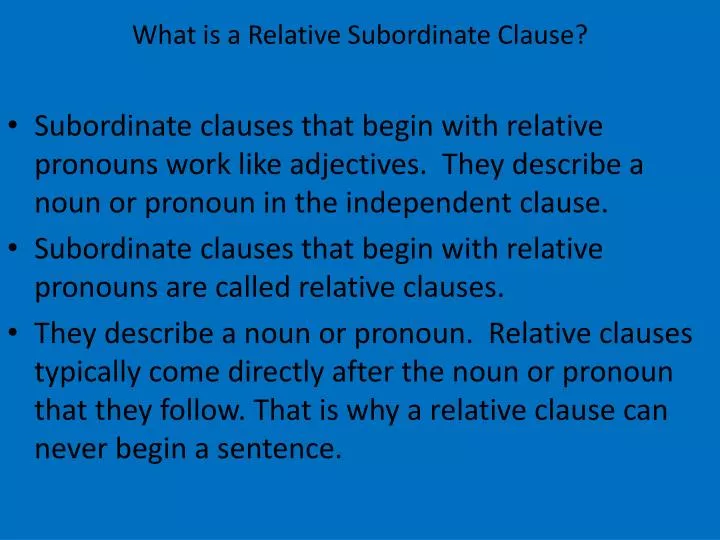
PPT What is a Relative Subordinate Clause? PowerPoint Presentation, free download ID2512000
Bound and free A bound relative clause, the type most often considered, qualifies an explicit element (usually a noun or noun phrase) appearing in the main clause, and refers back to that element by means of some explicit or implicit device within the relative clause.
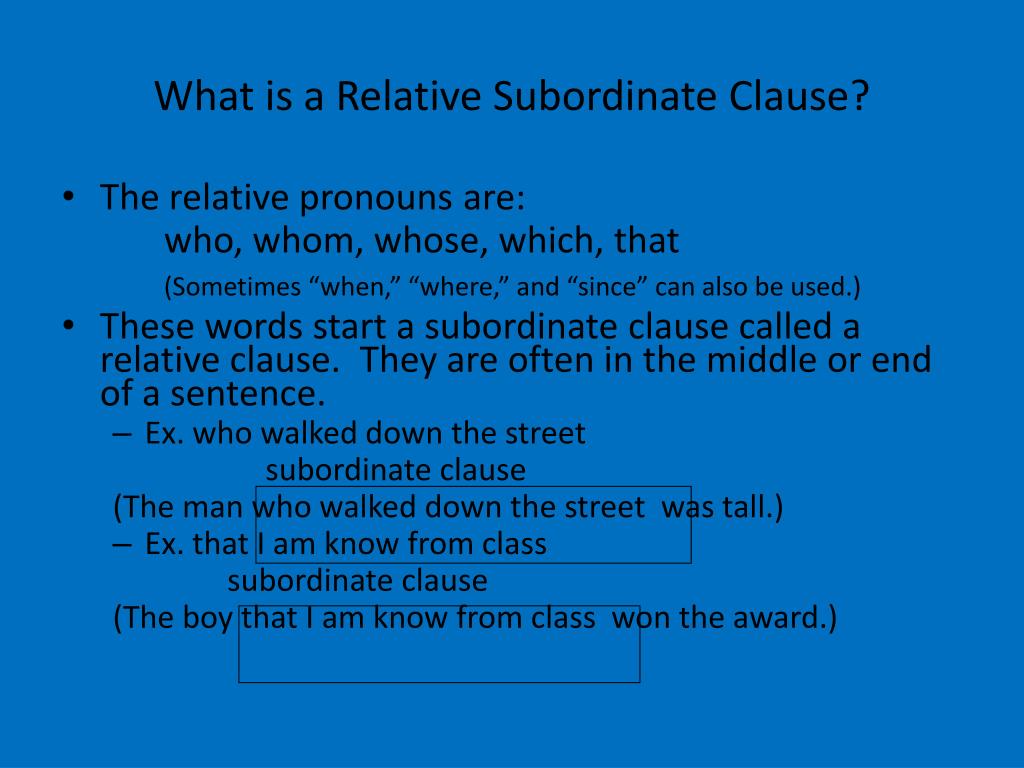
PPT What is a Relative Subordinate Clause? PowerPoint Presentation, free download ID2512000
Relative Clauses Relative clauses Introduction One of the features of written academic English that gives it its greater complexity is longer sentences, with more frequent use of subordinate clauses. A clause is part of a sentence and a subordinate clause is a group of words with a subject and a verb that cannot stand alone as a sentence.
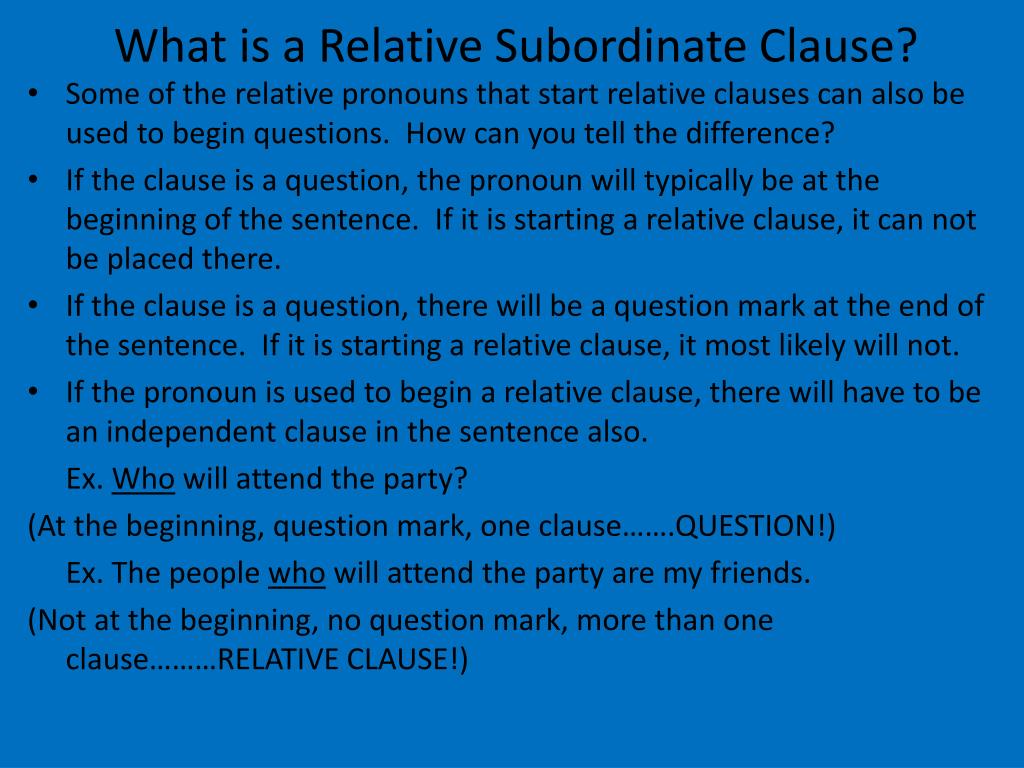
PPT What is a Relative Subordinate Clause? PowerPoint Presentation, free download ID2512000
Pair with this PowerPoint, which teaches children about subordinating conjunctions. Develop their understanding of concepts by using relative clauses beginning with who, which, where, when, whose, that or with an implied (i.e. omitted) relative pronoun. Develop their understanding of concepts by learning the grammar for years 5 and 6.
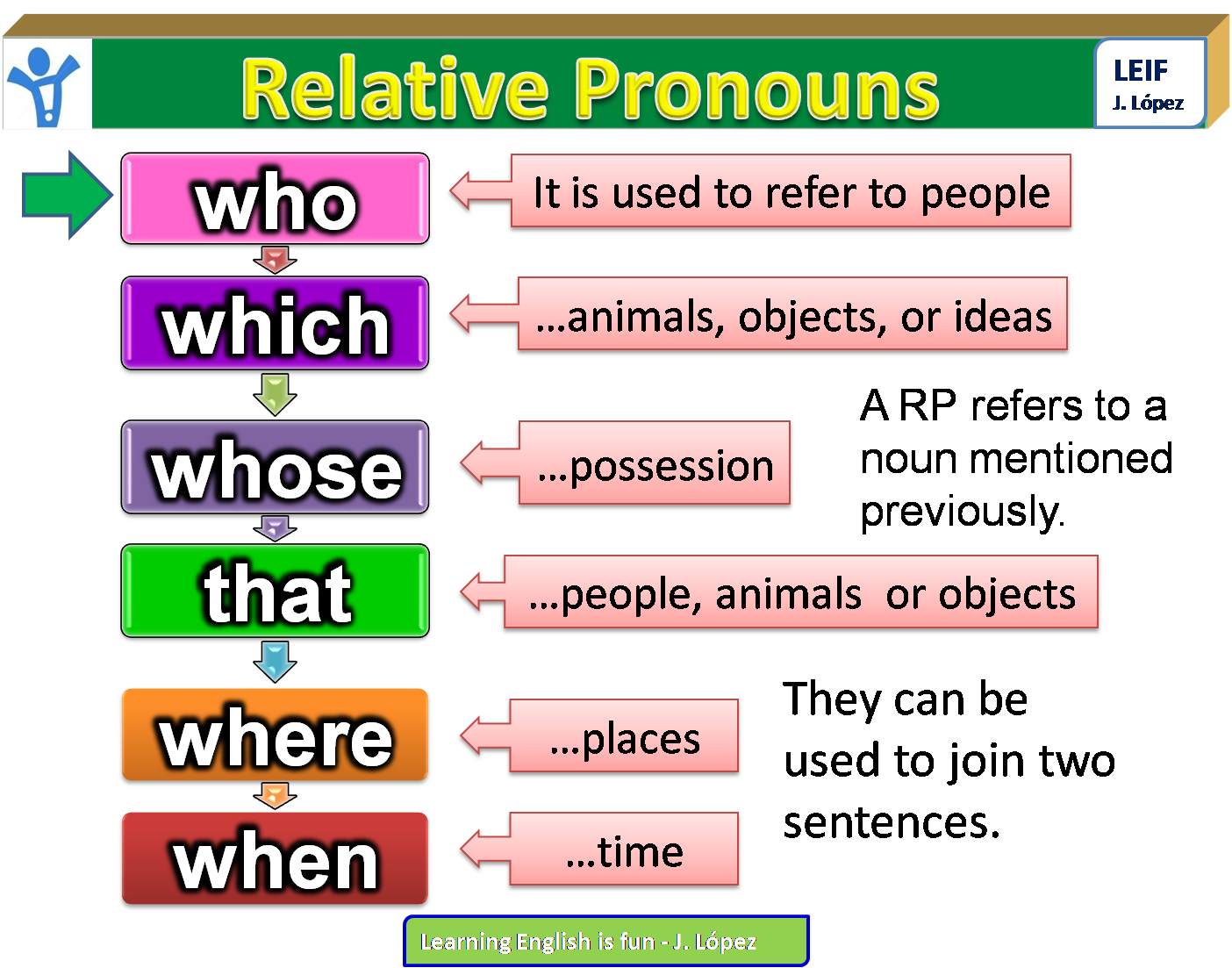
10b. Advanced English Grammar Relative clauses Advanced English
A relative clause is one kind of dependent clause. It has a subject and verb, but can't stand alone as a sentence. It is sometimes called an "adjective clause" because it functions like an adjective—it gives more information about a noun.
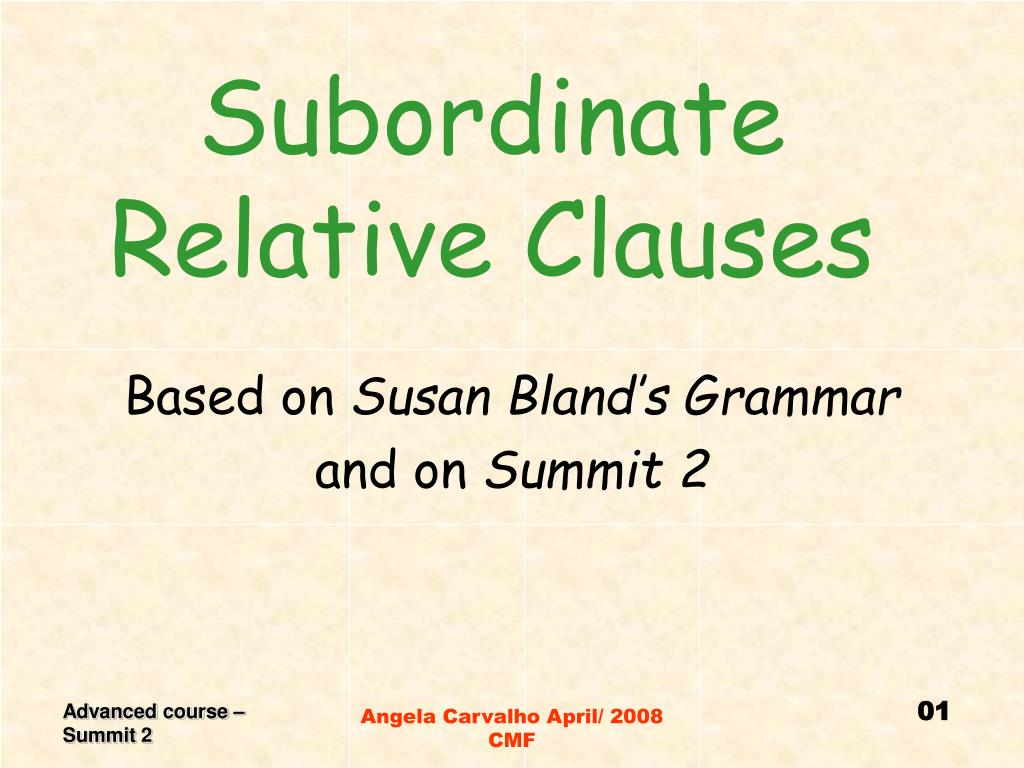
PPT Subordinate Relative Clauses PowerPoint Presentation, free download ID4939401
A relative clause is a specific type of subordinate clause that adapts, describes, or modifies a noun. They're introduced by a relative pronoun, such as 'that', 'which', 'who', 'whose', 'where', and 'when'. For instance: She lives in York, which is a cathedral city. She's the girl that can ride a unicycle.
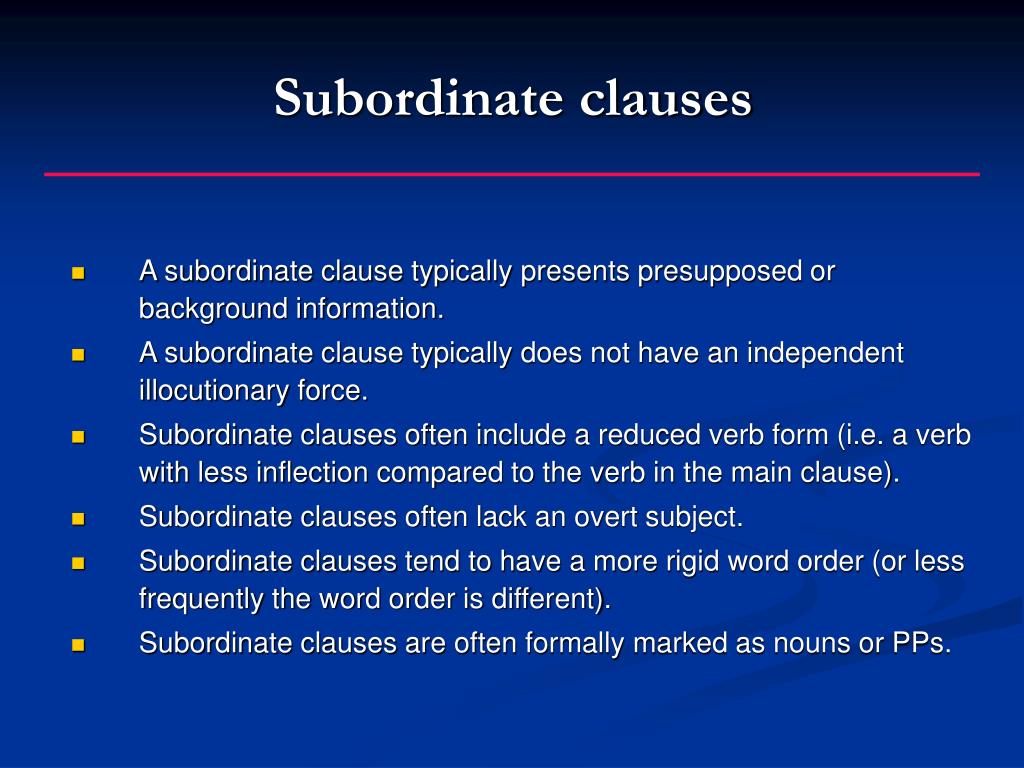
PPT Relative clauses PowerPoint Presentation, free download ID1467529
A subordinating conjunction is a word (or phrase) that suggests that a subordinate clause has information that is important to the main sentence. There are many subordinating conjunctions in the English language.

PPT Subordinate Clause and Relative Pronouns (who, which, that) PowerPoint Presentation ID
To explore relative clauses. View in classroom Curriculum Download (PDF) Core Content. In this lesson, we will be learning about relative clauses, which are a type of subordinate clause. Grid View. List View. Presentation. Video. Unsigned Video.

LearningEnglish Relative Clauses
Defining relative clauses give us essential information - information that tells us who or what we are talking about. The woman who lives next door works in a bank. These are the flights that have been cancelled. We usually use a relative pronoun or adverb to start a defining relative clause: who, which, that, when, where or whose.

Relative clauses defining and nondefining TestEnglish
1. Introduction: Clause-Linking in English 2. Finite Clauses vs. Reduced Finite Clauses (Nonfinite Clauses) 3. Clause-Linking Strategies in English (Classification) 4. Finite Subordination in English: Four Main Types of Dependent Clauses in English 5.

Relative Clause Definition and Examples of Relative Clauses • 7ESL
A subordinate clause is a clause that cannot stand alone as a complete sentence because it does not express a complete thought. For example: The dog stopped running when Jack blew the whistle. ("When Jack blew the whistle" is an example of a subordinate clause. It cannot stand alone as a sentence.
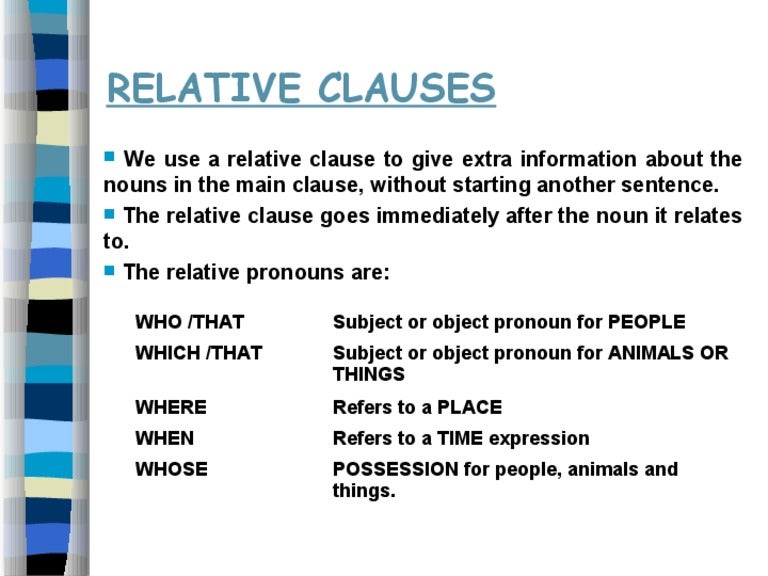
Relative Clauses / YOUR NEW TEACHER IS HERE LET'S REVIEW RELATIVE CLAUSES!!!!
A relative clause is a type of dependent clause that gives more information about a noun or pronoun. It cannot stand alone as a sentence and is introduced by a relative pronoun (who, whom, whose, which, or that) or a relative adverb (usually when, where, or why). Relative clauses can be either defining or non-defining.
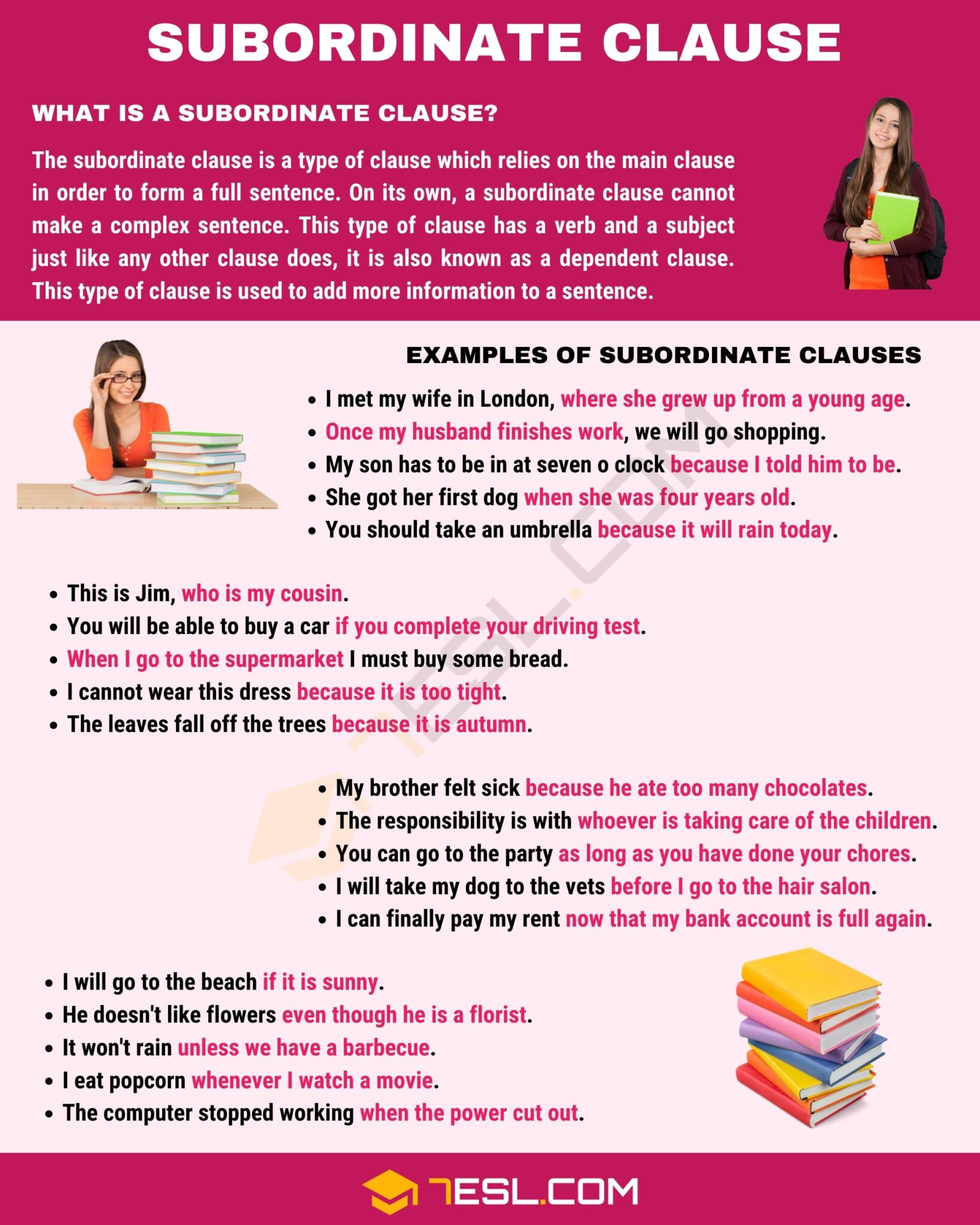
Subordinate Clause Examples and Definition of Subordinate Clauses Effortless English
The Merriam-Webster dictionary defines a clause as a group of words accommodating a predicate and a subject serving as a member of a compound or complex sentence. In simpler terms, a clause is made of a group of words that consist of a finite verb and a subject. A clause generally contains only one verb and one subject.
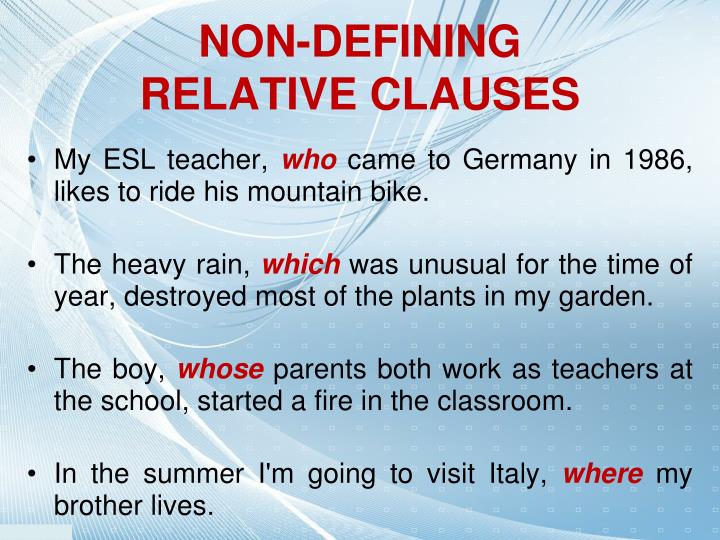
Defining Relative Clauses / Defining relative clauses A relative clause is a subordinate
Relative Clauses and Parenthesis Conjunctions Ages 10 - 11 (Year 6) Conjunctions Ages 9 - 10 (Year 5) Grammar Ages 10 - 11 (Year 6) Grammar Ages 9 - 10 (Year 5) Downloads Relative Clauses KS2 Lesson Ideas and Resource Pack 14 reviews Grammar Sentence Structure, Clauses and Phrases Relative Clauses and Parenthesis Free Account Includes:

Grammar Lesson 22 Subordinate and relative clauses Teaching Resources
These clauses are usually introduced by a relative pronoun, such as which, who, whom, whose, and that. Some examples of clauses of this type include which I got, whose book she lost, and that Rosie gave. Like other clauses, a relative clause has a subject and a verb. However, it can't stand alone as a sentence because it is a dependent clause.

Relative Clauses Defining and Nondefining My Lingua Academy
Learn the difference between a clause, a subordinate clause and a relative clause. Perfect to help with grammar homework and to prepare for the Key Stage 2 S.
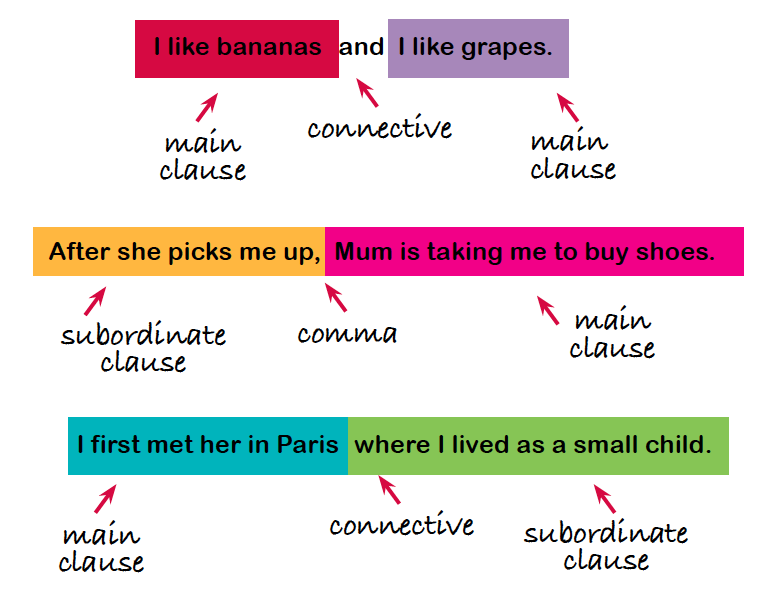
What is a clause? TheSchoolRun
These are subordinate clauses and add extra information to a sentence. A sentence that includes both a main and a subordinate clause is known as a complex sentence. For example: